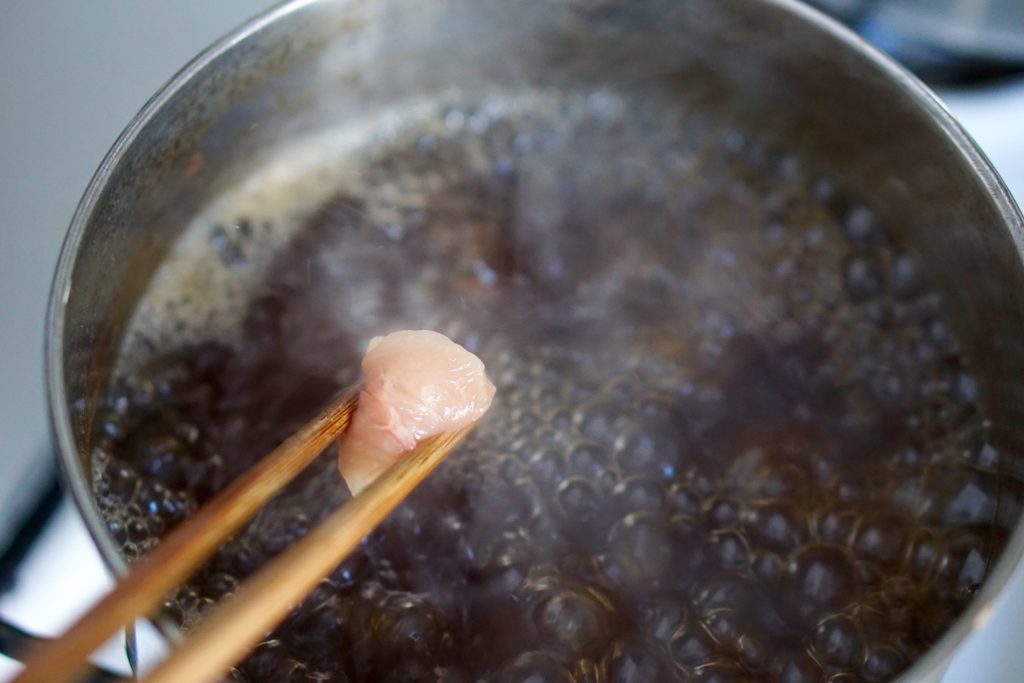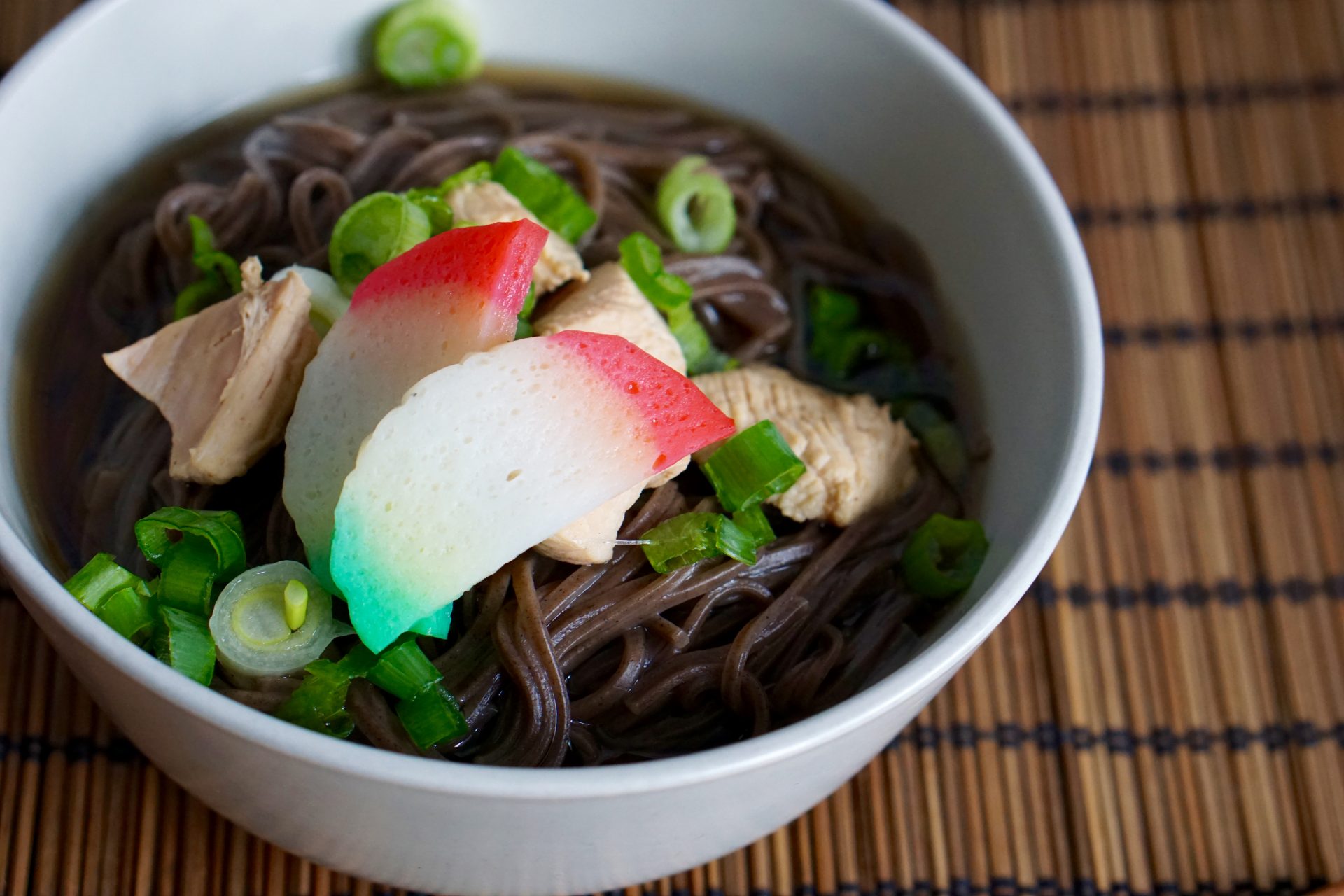Toshikoshi is translated as “year crossing”, and soba is the Japanese word for buckwheat noodles. The Japanese tradition of eating toshikoshi soba on December 31st to transition into the new year dates back to the Edo era. Soba noodles were said to be easier to cut than other types, symbolizing the ease with which one cuts off from the troubles of the old year in preparation for the new!
The Japanese New Year is rife with symbolism, and food plays a large role in its celebration. The soba noodles’ length is a symbol of long life, and so this dish has earned its place in the roster of auspicious foods eaten during the New Year.
Live long, and eat soba!

Toshikoshi soba
Ingredients
- 100 g chicken brest
- ½ stalk negi or green onion
- 4 slices kamaboko (optional)
- 3 cm yuzu zest (optional)
- 200 g soba noodles
- ⅓ tsp sugar
- 700 mL dashi
- 3 tbsp soy sauce
Instructions
- Slice the negi and leave in a bowl of cold water until step 3, then strain.Thinly slice the yuzu zest, and cut 4 slices of kamaboko (if using).Cut the chicken breast into bite-sized pieces.

- Put the soup ingredients in a pot over medium-high and bring to the boil. Add the chicken and boil for 3 minutes or until cooked through, removing any scum that may appear at the surface of the soup.

- Boil the soba according to package instructions, then drain and divide into two bowls.

- Pour the soup liquid into the bowls, add the chicken and strained negi, and top with the kamaboko and yuzu zest (if using).

